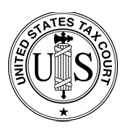Chapter 13 bankruptcy allows individuals with a regular income to create a plan to repay all or a portion of their debts over a period of three to five years. In Chapter 13 bankruptcy, a 1% repayment plan is a scenario where the debtor repays creditors at least 1% of their unsecured debts through a court-approved repayment plan.
Here’s how a 1% repayment plan might work within Chapter 13 bankruptcy:
- Filing for Chapter 13: The debtor files a petition for Chapter 13 bankruptcy with the bankruptcy court. They submit a proposed repayment plan outlining how they intend to repay their creditors over the specified period.
- Repayment Plan: In a 1% repayment plan, the debtor proposes to repay creditors at least 1% of their unsecured debts. Unsecured debts may include credit card balances, medical bills, personal loans, and other debts not backed by collateral.
- Court Approval: The repayment plan must be reviewed and approved by the bankruptcy court.
- Payments: The debtor makes regular payments to a bankruptcy trustee, who then distributes these funds among the creditors according to the approved plan. The payments typically continue for a period of three to five years.
- Completion of Plan: Once the debtor completes all payments through the plan, any remaining eligible debts covered by the plan are discharged, meaning the debtor is no longer legally obligated to pay those debt.
- It’s important to note that while a 1% repayment plan might seem minimal, it often complies with the bankruptcy laws. The actual percentage or amount repaid can vary based on individual circumstances, income, expenses, and the total debt owed.
- Chapter 13 bankruptcy allows debtors to retain their assets while restructuring their debts. However, eligibility and the specifics of repayment plans can vary based on individual financial situations and local bankruptcy laws. Consulting with a bankruptcy attorney is advisable to understand the implications, requirements, and feasibility of a 1% repayment plan within Chapter 13 bankruptcy.






